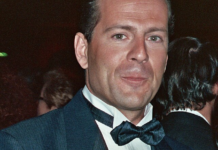Have you ever heard of the Dunedin Study? This long-term project tracks the growth of individuals born in Dunedin, New Zealand between 1972-73, and it has uncovered something fascinating. It turns out, your biological age (how your body has aged internally) can differ from your actual age by more than 30 years!

Imagine that! Two people, both 38 years old, could have biological ages ranging from 28 to 61. So even if you share a birth year with someone, your bodies might be aging at totally different rates.
Now, if you’re anything like me, your next question is probably, “Okay, how do I make sure I’m on the younger side of that scale?” Well, internal medicine doctor Kudo Aki has some advice. In his book ‘Nutrition for Rejuvenation,’ he emphasizes the crucial role diet plays in our aging process.
Eating the right foods can literally slow down your body’s aging clock. And in a society like Japan, where there’s a lot of focus on anti-aging, what you put on your plate is taken very seriously.
Eriko Sasai, author of ‘The Strongest Diet to Never Age,’ swears by the power of brightly colored veggies. The deeper the pigment, the more antioxidants they have, and trust me, you want those antioxidants! They’re like your body’s secret weapon against aging.
Rieko Mochizuki, a nutritionist, recommends eating a rainbow of vegetables for the best anti-aging effects. Each color offers different nutrients: red veggies are packed with lycopene, which is great for skin whitening; green ones are rich in beta-carotene, which promotes healthy skin; yellow ones are loaded with beta-carotene equivalent, which acts as vitamin A in the body, giving you elastic skin and reducing facial wrinkles; purple ones are filled with anthocyanin, a nutrient for the retina and lens that keeps your eyes clear; and black ones, rich in dietary fiber, help get rid of waste from the body.
Among these, green vegetables are the real stars. Beta-carotene, found in abundance in green veggies, not only makes your skin healthy but also protects it from harsh ultraviolet rays. And a little tip from Mochizuki: the absorption rate of beta-carotene increases when consumed with oil, so don’t shy away from a little healthy fat!
And guess which green veggie tops the list for beta-carotene? It’s Molokhia. This leafy green might be a bit of a stranger to some of us, but it’s a staple in the Middle East. Molokhia is so nutrient-dense that it’s known as ‘Pharaoh’s food’ in the West. It’s crammed with Vitamins A, C, E, and powerful antioxidants.
In Egypt, Molokhia is often cooked into a slimy stew with beef or chicken broth – a delicious and nutritious dish loved by all ages.
So there you have it. The key to a youthful biological age might just lie in the produce aisle. Here’s to eating our way to a longer, healthier life!
a long-term project that tracks human lives, the aging clock can differ by more than 30 years, even among individuals of the same age. The Dunedin Study, a medical project that has tracked the growth of over 1000 individuals born in Dunedin, New Zealand, between 1972-73, is still ongoing. The study has drawn attention from the academic world as it uncovered significant differences between individuals’ actual and biological ages. Even at the same age of 38, the biological age varied from 28 to 61 years, depending on the rate of aging.
So, how can we slow down the aging clock that varies from person to person? Internal medicine doctor Kudo Aki emphasizes in his book ‘Nutrition for Rejuvenation’ that what you eat today can change the speed of aging. He suggests that if you want to age gracefully while maintaining youthfulness, you should pay attention to your diet.
In Japan, the societal interest in anti-aging diets is high. Eriko Sasai, author of ‘The Strongest Diet to Never Age,’ suggests that vegetables, according to their color, allow us to identify their main nutrients. According to Sasai, vegetables and fruits rich in antioxidants are effective in preventing aging but should be chosen for their deep colors as they contain more antioxidants.
Professor Osamu Tanaka of Konan University in Japan, who has written numerous books on plant science, explains why we should eat dark-colored vegetables. “Sunlight is an important energy source for plants, but too much ultraviolet light can be harmful and dangerous. Plants produce more pigments to protect themselves from intense ultraviolet rays, which makes them change to more vivid colors,” he explains.
To reduce the active oxygen that causes aging, it is necessary to consume enough food rich in antioxidants. These include Vitamin C, Vitamin E, Polyphenols, and Carotenoids. Rieko Mochizuki, a nutritionist knowledgeable about the relationship between aging and food, emphasizes the importance of eating five-color vegetables for anti-aging.
According to Mochizuki, vegetables differ in nutritional content by color. Red is good for whitening because it contains lycopene, green is rich in beta-carotene which makes the skin healthy, yellow contains a large amount of beta-carotene equivalent that works as vitamin A in the body, which gives elasticity to the skin and improves facial wrinkles. Purple contains a lot of anthocyanin, which becomes a nutrient for the retina and lens, making the eyes clear. Black, rich in dietary fiber, is effective for the discharge of waste from the body.

Among the five-color vegetables, the most important is green. “If you consume beta-carotene, the skin mucosa regenerates and moisturizes, protecting the skin from intense ultraviolet rays. Since the absorption rate is higher when consumed with oil, it is also good to eat it as fried food,” says Mochizuki.
So, what are the green vegetables rich in beta-carotene? According to Eriko Sasai, Molokhia ranks first, followed by mugwort and spinach. Molokhia, a national food in the Middle East, is not well known in Korea. It is a known fact that Cleopatra, one of the world’s three great beauties, ate it to maintain her beauty. Molokhia, also known as ‘Pharaoh’s food’ in the West, is rich in Vitamins A, C, E, and has a strong power to suppress active oxygen, the enemy of aging.
In Egypt, it is used as a nutritious food for babies because of its soft texture. In Egyptian cuisine, finely chopped beef or chicken is boiled with broth, and Molokhia is added to make a slimy stew.








![[글로벌기자단]”이혼 전이라도 아이 양육권 먼저 결정?”한·중 가정법, 자녀 복리 개입 시점 ‘온도차’ 법원내부](https://turbonews.co.kr/wp-content/uploads/2024/03/Supreme_Court_2009-218x150.jpg)














